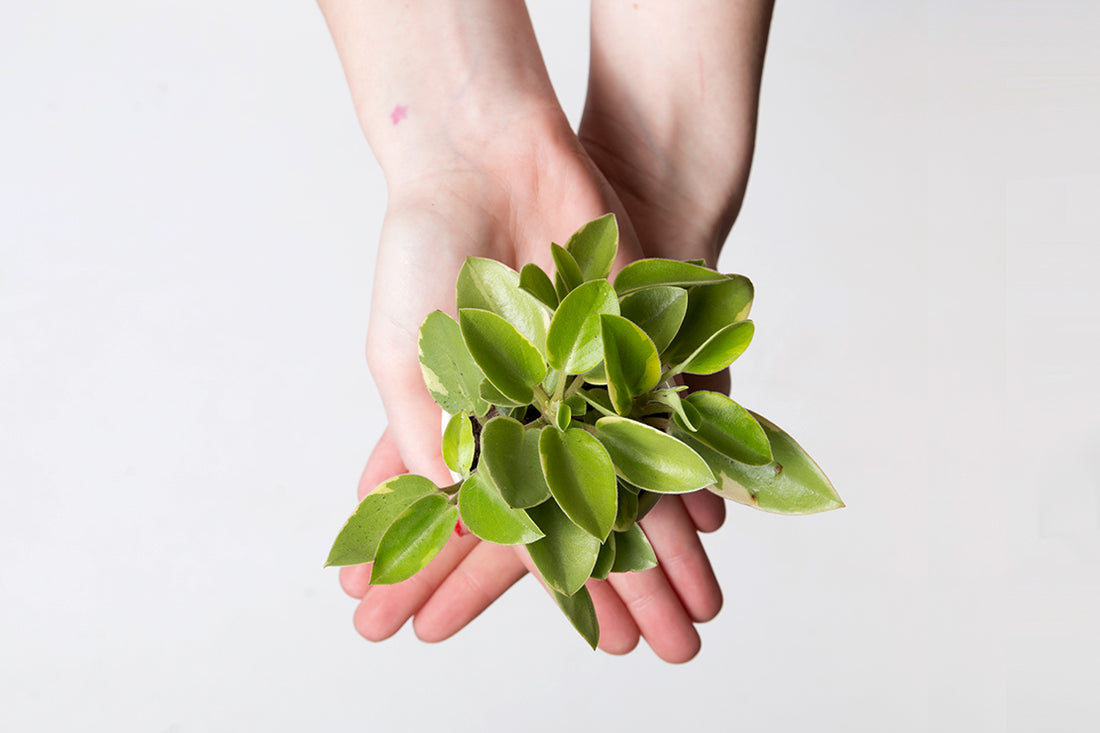
Common Care Questions
Plant Care: Fertilizer
You know your new plant needs the right light and just enough water, but what about fertilizer? While it can be great for plants in the long-term, it is by no means a daily requirement or a cure-all vitamin. Let’s take a closer look at fertilizer, different types and when you should and should not use it.

You know your plants need the right light and just enough water, but what about fertilizer? While it can be great for plants in the long-term, it is by no means a daily requirement or a cure-all vitamin. Let’s take a closer look at fertilizer, different types and when you should and should not use it.
Fertilizer is Not Food
Plants make their own food using light in a process called photosynthesis. Fertilizer is more like a vitamin you would take every so often to boost your health (it’s essentially a mixture of minerals). Minerals within the soil are released every time you water so your plant can absorb all that goodness. Excess minerals from fertilizer will not be used by your plant and can even damage it.
What is it Good For?
While fertilizer can be used as a nutrient boost it can also be used to replace essential nutrients your soil will eventually lose over time as a plant actively grows. You’ll want to add nutrients back into the soil via fertilizer to keep those levels up and your plant healthy. Recently potted plants and plants placed in low-light settings will not require fertilizer. And of course, neither will dead ones. No worries on that front; it’s just time for a new plant.
How to Choose?
When looking for a fertilizer, the brand name is not important. What is important is the N-P-K ratio. N for nitrogen, P for phosphorus and K for potassium are the key primary macronutrients your plant needs. N-P-K will look something like 15-30-15. Fertilizers with higher ratios are more concentrated than those with lower ratios. Your fertilizer may also have micronutrients, making it a complete fertilizer. These can include iron, manganese, zinc, copper, boron, molybdenum, and chlorine. Each micronutrient serves a role in plant enzymatic, cellular and developmental processes but aren't needed in large amounts like the macronutrients.
You can use any all-balanced fertilizers(10-10-10) for houseplants or choose one dependent on what you are trying to facilitate. Higher nitrogen ratio is best to increase leaf production while a higher phosphorous ratio helps to promote fruiting and flowering.
Solid, Liquid, Organic
Fertilizers come in different forms: liquid or powder, time-release pellets or organic. Liquids and powders are the most common, most cost effective and easiest to use. You can also dilute them with a little or a lot of water, depending on your plants needs. Time release pellets last a long time — about 3 to 6 months — and release small doses of nutrients every time you water, but you can run the risk of over-fertilization here. Stay cautious of a quick fix.
Chemical fertilizers are made from ground up minerals and formulated with a near-perfect amount of each macro and micro nutrient. They are also more concentrated and usually more affordable than say, organic types.
Organic fertilizers are naturally derived from animal or plant byproducts and are the most mild of all. Organic fertilizers obviously have some decaying organism so naturally, they stink. Make sure that organism is 1. worth the stench and 2. providing the right amount of nutrients for your plant. You can DIY it or, for the less adventurous, buy it readymade. Organic fertilizer can be a little more costly than other types, but it’s chemical-free alternative.
Organic and chemical fertilizers do the same thing in different ways: delivering nitrates, potassium ions, and phosphates to plants. One is not necessarily better than the other, but if you’re living that clean green life, go for organic. It’s a balance of personal preference — both yours and your plants’.
Six Quick Tips for Fertilizing
Tip 1: Spring is the best time to start fertilizing plants because that’s when they are starting to actively grow. Plants that grow faster, like begonias, should be fertilized more often than plants that grow slowly, like a cactus, or are dormant, i.e., all plants in winter.
Tip 2: Dilute your fertilizer. It’s always best to under-fertilize than over-fertilize. If there is a nutrient deficiency in the soil and you have not fertilized in a year or so, you can increase the potency by adding less water when you’re diluting the fertilizer.
Tip 3: Plants that give us fruits or flowers will require more fertilizer in their lifetimes. When we pick off fruits or flowers, we are taking away those nutrients and should restore them.
Tip 4: Know your N-P-K values. That’s the ratio of macronutrients your plant needs and what should be in your fertilizer. It looks something like 10-15-10. If you don’t see this on the package, find another fertilizer stat.
Tip 5: Micronutrients are just as important as macronutrients, plants just need less of them.
Tip 6: Organic or chemical fertilizer? It’s your call. Make sure your organic fertilizer has organisms that provide the right amount of nutrients for your plant. Chemical fertilizers are formulated with the near-perfect amount of macro and micronutrients and may be your best bet especially if you are new to the whole fertilizing thing.

Words By The Sill
Empowering all people to be plant people—a collection of articles from The Sill's team of plant experts across a variety of plant care topics to inspire confidence in the next generation of plant parents. Welcome to Plant Parenthood™.
Do Some Plant Shopping